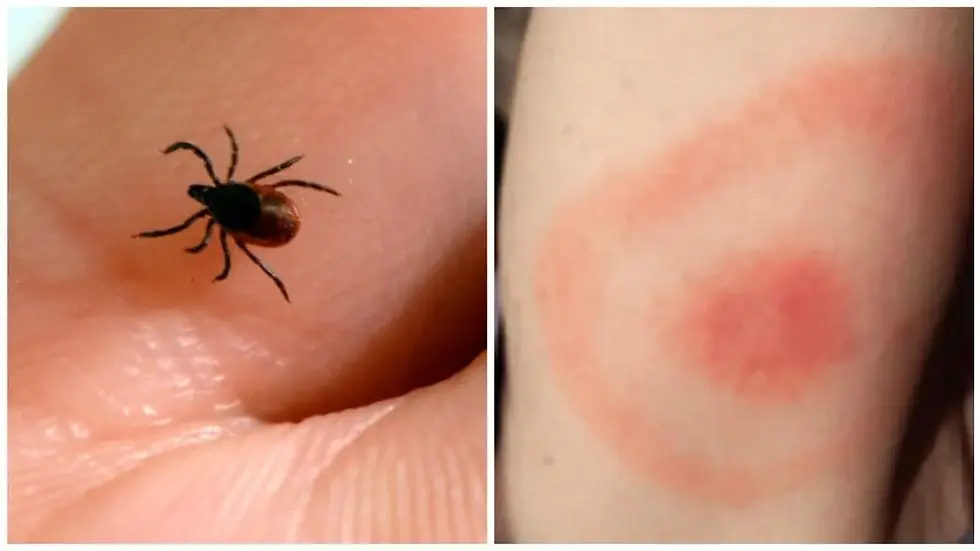Insect Stings & Bites
- Jason T

- Aug 5
- 4 min read
Updated: Aug 7

Insect Stings & Bites: Essential Knowledge for Nursing Students
🕷 A Little Humor Before We Get Serious
We can’t burn the whole house down just because there’s a spider in it… Although… that does feel very tempting at times. Whether it’s the surprise of a Black Widow in the shed, a wasp dive‑bombing your picnic, or a tick hitching a ride on your pant leg, our first instinct might be to panic. But as nursing students, we know that while dramatic fire‑based pest control is probably overkill, recognizing and treating insect stings and bites promptly can be the difference between mild discomfort and a medical emergency.
Just because you haven't seen a Black Widow or Brown Recluse spider before doesn't mean they don't exist.
🌎 Understanding Regional & Migrating Species
Why It’s Important: Just because you haven’t seen a Black Widow or Brown Recluse spider before doesn’t mean they don’t exist. Climate change and shifting weather patterns allow insects and arachnids to travel into new regions. This means that a patient presenting with a bite from a species “not native” to your area is becoming more common. Nursing students must recognize that knowing only “local species” is no longer enough—you may be the first to identify an uncommon but dangerous bite in your region.
Examples of Harmful Insects & Arachnids:
Spiders: Black Widow, Brown Recluse
Scorpions (Centruroides species)
Yes, there are scorpions in Alberta. The northern scorpion (Paruroctonus boreus), also known as the boreal scorpion, is the only scorpion species found in Canada and it is present in southern parts of Alberta!
Ticks (including Lyme-transmitting species)
Hymenoptera: bees, wasps, yellow jackets, hornets
Caterpillars (e.g., puss caterpillars / woolly slugs)
Good Resources:

🔍 Recognizing Warning Signs
Why It’s Important: Early recognition of harmful insect or spider bites can prevent complications, reduce hospital admissions, and in severe cases—save a life. Nursing students should know that certain species display natural warning signs such as bright colors, distinctive buzzing, or defensive posturing. For others, like ticks, the danger may be invisible until symptoms appear.
What to Watch For:
Pain, redness, swelling at the bite/sting site
Embedded stingers or ticks
“Bull’s-eye” rash pattern (tick bite)
Intense itching, burning, or skin discoloration
Allergic reactions—hives, swelling, respiratory distress
🛡️ Prevention Strategies
Why It’s Important: Preventing bites and stings is always better than treating them. As a nursing student, you will not only protect yourself during clinical placements in rural or outdoor settings, but you’ll also be able to teach patients prevention techniques—especially those at higher risk such as children, outdoor workers, and immunocompromised individuals.
Prevention Tips:
Wear long sleeves and long pants; tuck pants into socks/boots
In tick-prone areas, secure pant cuffs with tape or elastic bands
Choose light-colored clothing to spot insects/ticks easily
Avoid perfumes or scented lotions outdoors
Stay away from tall grass, underbrush, and wood piles
Check yourself, clothing, and pets after outdoor activities
Keep pets treated and inspected regularly
Carry an EpiPen if allergic to stings
🩹 Immediate First Aid Response
Why It’s Important: Knowing exactly what to do in the first few minutes can prevent venom spread, limit allergic reactions, and improve patient outcomes. Delays in removing stingers or ticks can worsen symptoms and increase the chance of infection or disease transmission.
Steps to Follow:
Scene Safety & ABCs – Wear gloves, check airway, breathing, and circulation.
Call 911 – If severe allergic reaction, scorpion/spider bite, or unable to remove stinger/tick safely.
Inspect & Care:
Stinger Removal – Gently scrape with a credit card; avoid squeezing. Wash, apply cold compress, monitor for allergy.
Tick Removal – Use tweezers to grasp close to the skin; pull steadily. Watch for rash, flu-like symptoms (Lyme disease).
Spider/Scorpion Bite – Safely photograph or collect specimen if possible. Monitor for pain spread, necrosis, muscle cramps.
🩼 Symptom Management & Recovery
Why It’s Important: As a nursing student, you may be the first healthcare provider to evaluate the patient’s recovery progress. Understanding symptom management helps ensure proper wound care, reduces infection risk, and provides comfort measures that improve healing.
Management Strategies:
Clean area with soap and water
Apply cold compress 10–20 minutes
Elevate affected limb to reduce swelling
Use calamine lotion, baking soda paste, or 0.5–1% hydrocortisone
Administer oral antihistamines and analgesics as needed
For allergic reactions:
Administer epinephrine immediately
Monitor ABCs
Be prepared for a second dose if symptoms persist
Why It’s Important: If a bite or sting causes a patient to lose consciousness—often due to anaphylaxis—it’s critical to maintain their airway and prevent aspiration until EMS arrives.
Steps:
Place far arm above head.
Cross near arm across chest.
Bend near knee.
Support head, neck, spine under shoulder and neck.
Roll away from you; head rests on raised arm.
Stabilize with knee and elbow.
Check airway and breathing regularly.
🧠 Nursing Student Takeaways
Be aware of local and migrating species—don’t assume a bite is harmless.
Prevention is the best treatment—teach patients how to avoid bites/stings.
Act quickly to remove stingers/ticks and start care.
Recognize and treat anaphylaxis immediately—EpiPen, ABCs, 911.
Use recovery position for unconscious patients until EMS arrives.
😂 Just for Laughs – Bug Edition
Because even serious topics deserve a smile!
Why did the spider go to the computer? Because it wanted to check its web site! 🕷💻
💡 Ready to Get Certified?
Be prepared. Be confident. Learn First Aid Today & Save a Life Tomorrow with Saving Grace Medical Academy Ltd. Now enrolling: Basic Life Support (BLS) & Standard First Aid CPR-C & AED courses designed for healthcare professionals.
📍 Training for First-Year Nursing Students
Join Saving Grace Medical Academy Ltd. for fully certified, CSA-compliant Standard First Aid CPR-C & AED courses—designed for Alberta’s future healthcare professionals.
Just Remember:
Protect Yourself. Call 911.Don’t Waste Time.
RESOURCES:

Author - Saving Grace Medical Academy Ltd
Jason T
Retired EMT - Heart & Stroke Foundation Senior Instructor







